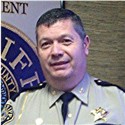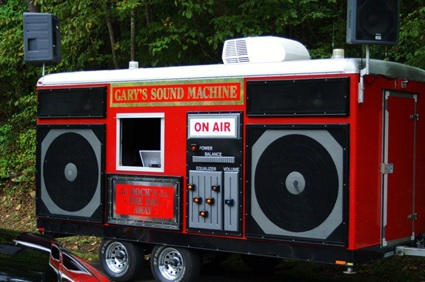
As summer draws to a close, back-to-school season is in full effect.
Laurel County Sheriff John Root reminds parents, guardians, and motorists that safety should be a priority for every family as children return to classrooms this fall. It is important for parents to stay up-to-date on the proper safety precautions and share this information with their children to keep them safe throughout the school year.
Back-to-School Safety Checklist
Transportation Safety
Whether children are transported by their family or take the bus to school, it is extremely important that they take proper safety precautions. Here are some tips to make sure your child safely travels to school.
Getting out at school
Review your family’s walking safety rules.
Walk on the sidewalk, if one is available.
Before you cross the street, stop and look all ways to see if cars are coming.
Never dart out in front of a parked car.
Riding the bus to school
Go to the bus stop with your child to teach them the proper way to get on and off the
bus.
Make sure your children stand six feet away from the curb.
If your child and you need to cross the street in front of the bus, walk on the side of the
road until you are 10 feet ahead of the bus. You always should be able to see the bus
driver, and the bus driver always should be able to see you.
Never walk behind the bus.
If you drop something near the bus, tell the bus driver. Never try to pick it up first because the driver may not be able to see you.
School Safety
Many school-related injuries are completely preventable. Follow these steps to ensure your
child’s safety at school.
Preventing backpack-related injuries
Chose a backpack for your child carefully. It should have ergonomically designed
features to enhance safety and comfort.
Don’t overstuff a backpack; it should weigh no more than 10 to 20 percent of your
child’s body weight.
For example, a child that weighs 60 pounds should carry a backpack no heavier
than 12 pounds.
Ask your children to use both straps when wearing their backpack to evenly distribute
the weight.
Behavior on the bus
When on the bus, find a seat and sit down. Loud talking or other noise can distract the bus driver and is not allowed.
Never put head, arms or hands out of the window.
Keep aisles clear—books or bags are tripping hazards and can block the way in an emergency.
Before you reach your stop, get ready to leave by getting your books and belongings together.
At your stop, wait for the bus to stop completely before getting up from your seat, then walk to the front door and exit, using the handrail.
Getting off the school bus
If you have to cross the street in front of the bus, walk at least ten feet ahead of the bus along the side of the road until you can turn around see the driver.
Make sure the bus driver can see you.
Wait for a signal from the driver before beginning to cross.
When the driver signals, walk across the road keeping an eye out for sudden traffic changes.
Do not cross the center line of the road until the driver has signaled that it is safe for you to begin walking.
Stay away from the wheels of the bus at all times.
Whether you’re getting on or off the bus, stay 10 feet ahead of the bus when crossing the street in front of it and never walk behind the bus.
Back to School:
Safety tips for motorists
Sharing the road safely with school buses
School buses are one of the safest forms of transportation on the road today. In fact,
according to the National Highway Traffic Safety Administration, riding a bus to school is 13
times safer than riding in a passenger vehicle and 10 times safer than walking to school. The
reality of school bus safety is that more children are hurt outside the bus than inside as
passengers. Most of the children who lose their lives in bus-related crashes are pedestrians,
four to seven years old, who are hit by the bus or by motorists illegally passing a stopped
school bus. For this reason, it is necessary to know the proper laws and procedures for
sharing the road safely with school buses:
All 50 states have a law making it illegal
to pass a school bus that is stopped to
load or unload children.
School buses use yellow flashing lights
to alert motorists that they are preparing
to stop to load or unload children. Red
flashing lights and an extended stop sign
arm signals to motorists that the bus is
stopped and children are getting on or off
the bus.
All 50 states require that traffic in both
directions stop on undivided roadways
when students are entering or exiting a
school bus.
While state laws vary on what is required
on a divided roadway, in all cases, traffic
behind the school bus (traveling in the
same direction) must stop.
The area 10 feet around a school bus is
where children are in the most danger of
being hit. Stop your car far enough from
the bus to allow children the necessary
space to safely enter and exit the bus.
Be alert. Children are unpredictable.
Children walking to or from their bus are
usually very comfortable with their
surroundings. This makes them more
likely to take risks, ignore hazards or fail
to look both ways when crossing the
street.
Never pass a school bus on the right. It
is illegal and could have tragic
consequences.
Sharing the road safely with child pedestrians
All drivers need to recognize the special safety needs of pedestrians, especially those that
are children. Generally, pedestrians have the right-of-way at all
intersections; however, regardless of the rules of the road or right-of-way, you as a driver are
obligated to exercise great care and extreme caution to avoid striking pedestrians.
Drivers should not block the crosswalk
when stopped at a red light or waiting to
make a turn. Do not stop with a portion
of your vehicle over the crosswalk.
Blocking the crosswalk forces
pedestrians to go around your vehicle
and puts them in a dangerous situation.
In a school zone when a warning flasher
or flashers are blinking, you must stop to
yield the right-of-way to a pedestrian
crossing the roadway within a marked
crosswalk or at an intersection with no
marked crosswalk.
Always stop when directed to do so by a
school patrol sign, school patrol officer or
designated crossing guard.
Children are the least predictable
pedestrians and the most difficult to see.
Take extra care to look out for children
not only in school zones, but also in
residential areas, playgrounds and
parks.
Don’t honk your horn, rev your engine or
do anything to rush or scare a pedestrian
in front of your car, even if you have the
legal right-of-way.









